by Larry Williams | Jun 17, 2013
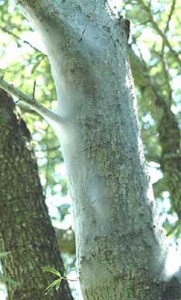
Tree cattle webbing. Photograph by Douglas L. Caldwell, University of Florida
Many people are noticing small insects on trunks and branches of their trees. When disturbed, these insects move in a group and are commonly called tree cattle because of this herding habit. They are ¼ inch brownish-black insects with white markings. Some people assume that these insects will injure their trees but they are harmless. They could be considered beneficial.
Before you spray your tree to control these insects, click on the following link and read the entire article.
Tree cattle are harmless
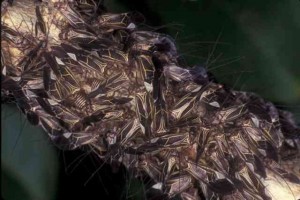
Tree cattle. Photograph by Jim Castner, University of Florida
by Alex Bolques | Jun 17, 2013
Soil temperatures and weather conditions are becoming favorable for the development of fairy ring in the landscape.
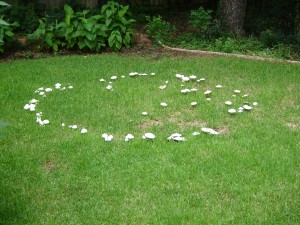 Most commonly observed as a circular ring of mushroom growing on lawns and gardens, the ring of mushroom growth, termed “fairy ring”, has its origin in fairy-tale and superstition.
Most commonly observed as a circular ring of mushroom growing on lawns and gardens, the ring of mushroom growth, termed “fairy ring”, has its origin in fairy-tale and superstition.
However, it is the result of various basidiomycete fungi in the soil. Their appearance is that of the familiar shape of a mushroom with a central stalk and a cap containing gills on its underside.
Given the right environmental conditions, such as prolonged periods of high humidity, high air temperatures (above 90°F) and precipitation (natural rainfall or irrigation), fairy ring can occur. Normally fairy rings are seen during Northwest Florida’s wet summer months.
Nutrient for growth and development is derived from decomposing organic matter. Similar to a plant root system, fungal thread-like structures called hyphae move through the soil searching for organic debris as a source of nutrient. This is especially evident on heavily thatched areas of the lawn. As the hyphae continue to grow, they spread outward in multiple directions colonizing new soil.
An arc or ring-like pattern is usually noticeable once mushroom growth and development is visible. The shape of the mushroom’s ring-like pattern outlines the outward edges or growing points of an expanding underground mycelium (fungal mat) network. That is the reason why fairy rings may get larger from one year to the next.
To learn more about “Fairy Rings” including types, safety considerations, and control options, please follow this link.
by Blake Thaxton | Jun 17, 2013
 Aquaponics is an exciting system where fish and plants grow in harmony. The aquaponic system can be a fun project for the home gardener but can also become a successful farming venture. Come and learn the basics of growing fish and plants together in an AQUAPONICS system.
Aquaponics is an exciting system where fish and plants grow in harmony. The aquaponic system can be a fun project for the home gardener but can also become a successful farming venture. Come and learn the basics of growing fish and plants together in an AQUAPONICS system.
Date: June 25th Time: 8:00am-3:30pm Cost: $25
Locations: UF/IFAS Extension Escambia Co., 3740 Stefani Road,Cantonment, FL 32533


Register for the workshop at: ap2013.eventbrite.com
For more information call or email:
Chris Verlinde – (850) 623-3868 or cmverlinde@gmail.com
by Larry Williams | Jun 17, 2013
There is something for the professional and homeowner at the 19th Annual Turfgrass Expo & Field Day. You’ll see and learn the newest in the areas of lawn grass varieties, weed control and many other topics related to selecting, establishing and maintaining a Florida lawn.
This University of Florida/Institute of Food and Agricultural Sciences (UF/IFAS) event will take place on June 19 at the West Florida Research and Education Center (WFREC) in the north part of Santa Rosa County.
Registration fee is $40. Register Online or register at the event. For more information, contact Robin Vickers at (850) 983-5216 ext. 113 or visit the WFREC website.
To read entire article, click the following link. 2013 Turfgrass Expo
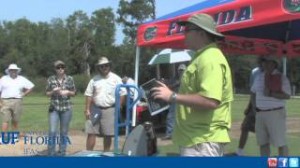
WFREC Turfgrass Field Day, Photograph UF/IFAS Extension
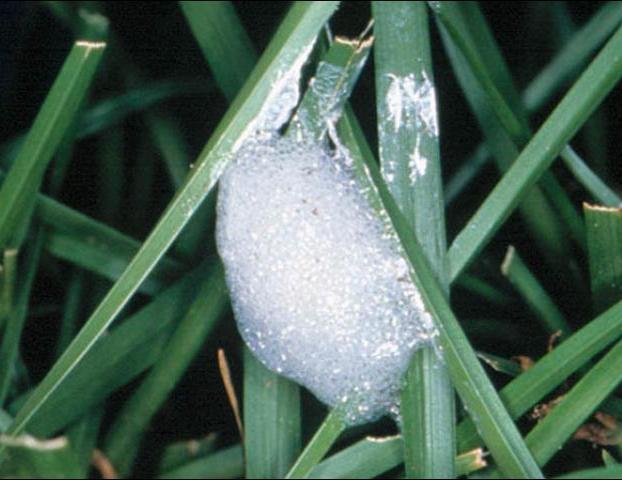
by Blake Thaxton | Jun 12, 2013

Credit: Lyle Buss, University of Florida
In recent weeks Spittlebugs have been found everywhere in the western parts of the panhandle. Spittlebugs are the little black and orange insects you find everywhere in early June. The adult spittlebug is about 1/4 inch long and has two orange lines across its back. You may notice them flying on you while you mow the lawn.
The immature spittlebugs called nymphs, are usually found in a foamy white mass that characterizes the name of the insect. The spittle mass is for protection of the nymphs from predators and desiccation.

Credit: E. A. Buss, University of Florida
The spittlebug can cause injury to ornamental turfs and other ornamental plants. The adults feed on turf, centipede is the turf of choice. When feeding, the insect injects a toxin into the leaf blade with its piercing/sucking mouthparts. The pierced leaf blade will take on purple, white, or yellow stripes along the turfgrass blade vertically. Heavy infestations are best identified by a combinations of finding the injury, spittle masses, and large numbers of adults present.

Credit: Larry Williams, UF/IFAS
Recently spittlebugs have been spotted across many counties in the panhandle. Many have brought them to the extension offices for identification and treatment recommendations. Identification is the correct first step when having an IPM or Integrated Pest Management approach to insect control.
Bryan Unruh Ph.D is the UF/IFAS turf specialist stationed in Jay at the West Florida Research and Education Center. Dr. Unruh posted on Facebook about Spittlebugs and the post read:
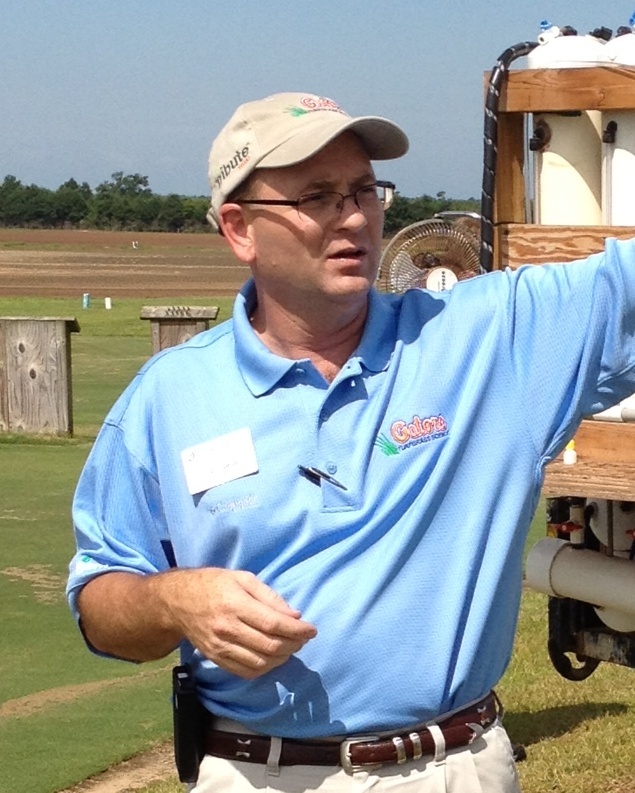
Dr. Bryan Unruh, UF/IFAS
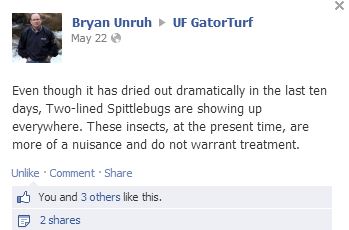
Sticking to an IPM plan, at this current date spittlebug damage has not met the aesthetic threshold to put a control plan in place. Once the threshold has been met then cultural, mechanical, an chemical techniques need to be discussed to best take care of the issue. Since Dr. Unruh commented on spittlebugs there has been a dramatic increase in rainfall, so we can expect for the spittlebugs, to stay around a while longer. If you think you have an infestation that warrants treatment, call your local extension agent for treatment options.










